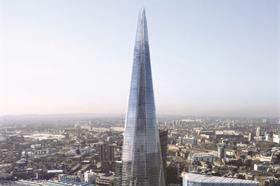Exclusive whole life carbon research shows extra cost is not offset by emissions reductions

Fitting triple glazing in offices to reduce emissions is a waste of money because it increases the building’s carbon footprint, exclusive research for Building has revealed.
The use of triple glazing has increased in recent years to meet tough energy regulations and was used on the Heron Tower, in the City of London, and The Shard, on the south bank of the Thames.
However, research by whole life carbon assessor Sturgis Carbon Profiling and cost consultant Gardiner & Theobald, showed fitting triple glazing cost an additional £80/m2 and increased whole life carbon dioxide emissions by 23kg/m2 compared with double glazing.
This is because the additional energy used in manufacturing the triple glazing, when compared with double glazing, is not offset by the energy savings in use.
For the exclusive research in full see Building’s data section here
Gareth Roberts, director of Sturgis Carbon Profiling and one of the authors of the report, said the outcome was a consequence of trying to meet the targets in PartL of the Building Regulations.
“That marginal benefit you need to meet the requirements can end up doing more harm than good,” he said.
The study compared a standard prestige office with one optimised for whole life carbon reductions using emerging CEN/TC 350 suite of standards, which sets out a methodology for measuring whole life carbon and includes embodied, construction, operational and end of life disposal emissions.
The research showed the whole life carbon footprint of an office could be reduced by 16% for a cost increase of 1.4% when whole life carbon analysis is used in its development. The same carbon reductions would cost 7% more if delivered using renewables.
It revealed only fitting triple glazing to the south and west elevations of offices cost an extra £40/m2 and reduced whole life CO2 emissions by 4.2 kg/m2. Roberts said there were more cost effective ways of reducing whole life carbon.



























3 Readers' comments